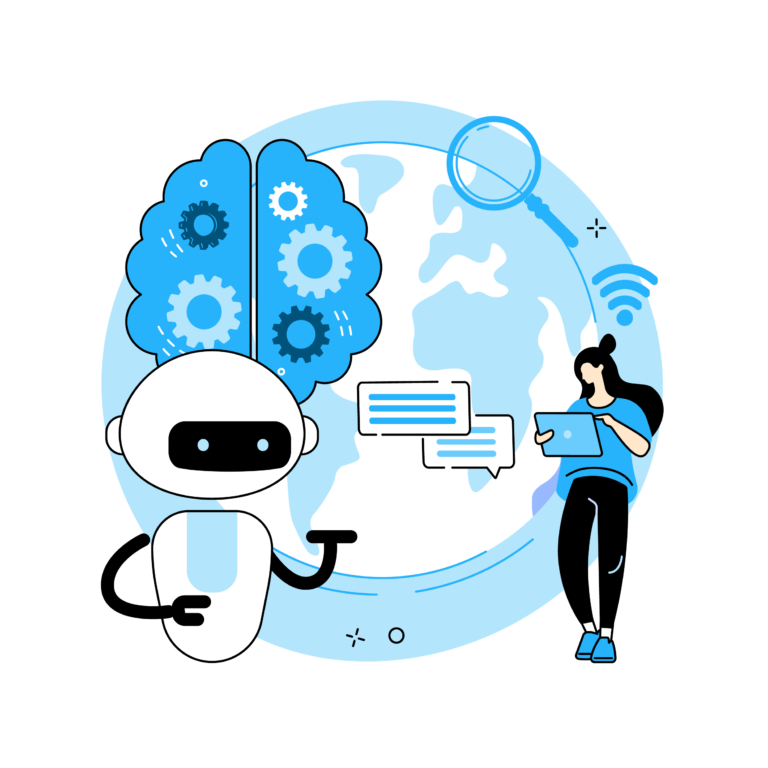Artificial intelligence (AI) has already begun transforming the Norm Engineering (NE) landscape, enabling unprecedented efficiency and consistency in regulatory compliance. But the future holds even greater possibilities. As generative AI matures, we are on the brink of a new era. NE could redefine how societies govern, enforce, and interact with legal norms. In this final blog of the series with Lydia Meijer, Senior Strategist at TNO and former professor at the University of Amsterdam, we explore the future of AI-enabled Norm Engineering. We also examine its implications for businesses, governments, and individuals.
Generative AI: transforming norm engineering
Generative AI is set to revolutionize Norm Engineering by enabling systems to process and interpret vast amounts of legal data at unimaginable scales. For example, generative AI can already analyze complex legal texts to identify inconsistencies, generate summaries of regulations for specific industries, or create preliminary compliance reports tailored to unique scenarios. Meijer highlights the transformative potential of this technology: “We are moving towards a future where AI can handle the full scope of laws across all jurisdictions, with minimal human intervention.” This capability will allow NE to expand beyond its current applications and address more complex, multi-layered regulatory environments. Read about the collaboration of AI and Norm Engineering in our first blog of the series.Multi-agent AI Systems: collaborative intelligence
One of the most exciting prospects for NE is the development of multi-agent AI systems. These are networks of specialized AI models working collaboratively to tackle different aspects of compliance and regulation. Lydia Meijer envisions a scenario where one AI agent gathers relevant documents, another interprets legal texts, and another evaluates the implications for specific industries or cases. Sounds amazing, right? Such systems could revolutionize industries like international trade, where compliance often involves reconciling overlapping national and international laws. By breaking down complex tasks into manageable components, multi-agent systems could offer tailored, efficient solutions for even the most intricate regulatory challenges. Multi-agent systems would also enable real-time communication between different regulatory bodies, ensuring that law interpretations remain consistent across jurisdictions. This could drastically reduce the time and effort required for multinational businesses to adapt to varying regulatory standards. Moreover, these systems could provide predictive analytics, helping companies foresee potential compliance risks.Integrating NE with emerging technologies
The future of Norm Engineering will likely involve integration with other cutting-edge technologies, such as blockchain and the Internet of Things (IoT). Blockchain can serve as a secure, unalterable record for tracking compliance activities, promoting both transparency and accountability. IoT devices, meanwhile, could offer real-time data to support automated compliance checks in areas like environmental monitoring or supply chain management. By combining NE with these technologies, governments and businesses can create robust systems that ensure compliance and address persistent challenges like inefficiency and lack of transparency. For example, blockchain technology can reduce fraud in compliance reporting by providing a tamper-proof ledger. At the same time, IoT sensors can continuously monitor environmental factors such as emissions or resource usage, automatically flagging non-compliance and enabling swift corrective actions. These integrations enhance both reliability and trust in regulatory systems.The democratization of compliance: broadening access
AI-enabled Norm Engineering has the potential to democratize access to legal expertise. Today, navigating complex regulations often requires significant resources, creating barriers for small businesses and individuals. Future NE systems could level the playing field by providing affordable, accessible tools for understanding and meeting compliance requirements. Meijer explains: “Norm Engineering could make compliance as simple as using a search engine. Imagine typing your situation into a system and receiving a clear, actionable plan for meeting all legal requirements.” This accessibility could empower more people to participate fully in the economy, reducing disparities and promoting fairness. Expanding applications across domains As NE systems evolve, their applications will likely extend beyond traditional regulatory domains. For example, in disaster response, NE systems could help coordinate compliance among multiple agencies in real-time, ensuring that emergency measures meet legal requirements while minimizing bureaucratic delays. This could be particularly transformative in rapid urban evacuations or international aid distribution scenarios. Potential future uses include:- Smart cities: Automated compliance systems could manage urban infrastructure, ensuring safety and efficiency in real-time.
- Healthcare: NE could streamline compliance with complex medical regulations, improving patient outcomes while reducing administrative burdens.
- Environmental protection: Advanced NE systems could monitor and enforce environmental standards, helping to combat climate change and promote sustainability.

Challenges on the horizon: navigating complexities
While the future of NE is full of promise, significant challenges remain. The rapid advancement of AI raises ethical, technical, and social questions that must be addressed to ensure the technology serves the public good.
- Balancing automation with human oversight
As NE systems become more autonomous, maintaining human oversight is crucial. Meijer stresses, “We cannot let machines decide on human rights without accountability.” To ensure transparency and reliability, policies like mandatory AI documentation, explainable models, and independent review boards are essential. Developers must prioritize systems that allow human intervention and augment expertise, ensuring automation supports rather than replaces human judgment. - Data security and privacy
AI-driven NE systems pose privacy risks due to their reliance on large datasets. Robust safeguards, anonymization, and evolving regulatory frameworks are necessary to protect sensitive information while maintaining accuracy. Transparency in how data is collected, stored, and used will build trust and accountability in these systems. - Avoiding over-reliance on AI systems
While AI improves efficiency, over-reliance can create vulnerabilities. Meijer warns, “If we delegate too much authority to AI, we risk losing the ability to intervene effectively when things go wrong.” Combining AI with human expertise, maintaining manual backup processes, and stress-testing systems will ensure resilience and reliability in critical decision-making.
Balancing automation, privacy, and human oversight is key to the sustainable future of Norm Engineering.
Read more about ethical challenges of AI-enabled NE in our previous blog from the series.
Opportunities for collaboration: global efforts
The future of AI-Enable Norm Engineering will require collaboration across sectors and borders. Governments, businesses, and academic institutions must work together to establish standards and best practices for developing and deploying NE systems.
Public-private partnerships for innovation
Collaborative efforts between public and private entities could accelerate the adoption of NE technologies. Governments can provide regulatory frameworks and funding, while businesses bring innovation and technical expertise. Together, these partnerships could ensure that Norm Engineering serves the needs of society as a whole.
Global regulatory frameworks and cooperation
International cooperation will be essential given the global nature of many regulatory challenges. A recent example of successful international regulatory cooperation on tech innovation is the Framework Convention on Artificial Intelligence and Human Rights, Democracy, and the Rule of Law, adopted on September 5, 2024. This legally binding treaty, developed by the Council of Europe with participation from over 50 countries — including the United States, United Kingdom, European Union, Canada, Israel, Japan, and Australia — establishes guidelines to ensure AI systems respect human rights and democratic values. Signatories are accountable for preventing harmful and discriminatory outcomes from AI systems and must provide legal recourse for individuals affected by AI-related rights violations. Harmonizing Norm Engineering systems across jurisdictions in a similar way could improve regulatory efficiency and promote shared values in the digital age.
A vision for the future: bridging technology and society
AI-enabled Norm Engineering has the potential to transform not only regulatory compliance but also the very fabric of governance and society. NE can create a more efficient, equitable, and sustainable world by leveraging generative AI, multi-agent systems, and emerging technologies.
As Lydia Meijer concludes: “The future of Norm Engineering is not just about technology; it’s about building systems that reflect our shared values and aspirations.” With careful planning and collaboration, the possibilities are limitless.
By addressing current challenges and seizing opportunities for innovation, we can ensure that NE becomes a force for good, shaping a future where technology enhances governance, empowers individuals, and upholds the principles of fairness and justice.











